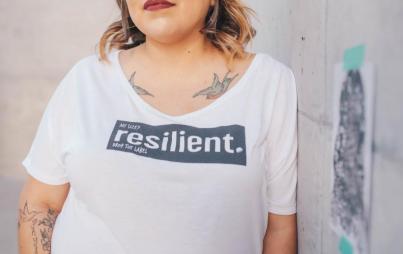
Thinkstock
“I would like to go to sleep today and not wake up tomorrow. The truth is life is too hard and I am alone.”
“The fact that people won’t approach you because they think that you will give them a contagious disease, or just the fact that you look for work and they don’t call you because of your physical appearance, is something that you will never forget. All because of the acid.”
"When a corrosive substance, such as acid, lands on your skin, you begin to feel an unforgettable burning, as if you were on fire—an unbelievable pain. It is like having a grill on your body."
Did these confessions conjure up images of Pakistan? Perhaps India or Bangladesh? Maybe Taliban-controlled Afghanistan? While these countries are no stranger to acid attacks, the words above were spoken by women living in a nation much closer: Colombia. Nearly 1,000 Colombians have been victimized by acid attacks in the past decade, and the country is seeing an uptick in this sickening violence.
So who is behind this cruelty?
Consuelo Cordoba, the woman who spoke of not wanting to wake up tomorrow, was doused with skin-searing acid by a jilted boyfriend. Her ear, her eye, much of her lower face, her teeth were all melted off. She is left wearing a mask and drinking from a straw looking, as she devastatingly claims, “like a monster.” She relies on charity to survive.
The woman who spoke of her physical pain, Elizabeth Ruales, has also been plagued with near constant thoughts of suicide since her attack—when a disgruntled coworker took out his frustrations on her.
The second quote belongs to Viviana Hernandez—whose case was one of the first that was nationally reported . . . in 2007. Her attacker? An acid-wielding assailant who’d been hired by the father of her children. In fact, when she was doused with acid, she was returning home with her four year-old son. She lost her left eye in the attack.
But the reason her case attracted national attention, much like the one of Natalia Ponce de León—which stirred up quite a storm in March—has little to due with the grisliness or depravity of their attacks, but instead about class. According to Hernandez, who's become an activist on this issue, de León's case:
"was a big deal because she is better positioned, economically. The upper class realized that it is also against them. We are outraged that everyone felt assaulted by this case, when there are plenty in the country that are still trying to get the attention of the authorities.”
As for the average victim, she is usually a woman between the ages of 26 and 35; 90% of those attacked are female. And those responsible for carrying out the attacks are, generally, hired. Some are even boys, commissioned for as little as $1.75.
Why so much acid-related violence?
The Colombian ONG, a collective working on eradicating these attacks, reported in 2011 that Colombia had the highest level of reported acid attacks worldwide. (Keep in mind the number of actual attacks is likely much higher given the stigmas/safety issues surrounding reporting.)
But why?
As for the chosen tactic, the answer is part—crassly—economic-based: acid is inexpensive. The price of nitric and sulfuric acids, the chemicals most commonly used, is about $3 to $5.50 per gallon. And there’s no obstacle in obtaining them.
But why acid attacks at all? Monica Roa, Bogota-based director of Women’s Link Worldwide believes that there is very little difference in the sanctioned violence against women in the East and West:
“Sometimes in the West we make fast judgments and say, ‘Look how terrible they treat women in the East,’ and we don’t look first at ourselves. The violence here may be different, but it emanates from the same place. This is a culture where machismo reigns, where men do what they want to do.”
Given the extremely high premium placed on beauty in Colombia (2011 data from the International Society of Aesthetic Plastic Surgery found that, by percentage of population, Colombia ranked in the top five countries where most plastic surgery is performed), it makes a very sick sort of sense that disfiguring women could be the most brutal assertion of control over or act of revenge against them.
As sociologist Santiago Recalde expounds:
“The act of marking or maiming the face of a woman is to treat her like an object, a thing, a private property. To mark someone means that although you’re not with me, you’re always going to be with me.”
And gender specialist Waldistrudis Hurtado Minto of a USAID program reports, because the culture is commonly violent against women, many don’t know they can even report attacks:
“They think this violence is natural, just because they’re women. So any type of violence is considered part of daily life, or their fault. Many were just born into this.”
Complicating things further is the fact that the country's media, institutions, and judicial system do not give acid attacks, or violence against women more broadly, the attention they deserve . . . As painfully evidenced by a judge's ruling in March that Elizabeth Ruales’s attacker, Jose Espinosa, was “not a threat” to society. He was sentenced to a prison term of one and half years on a charge of “injury,” which is bailable, and yes, he is currently free. Jose Espinosa's freedom is the perfect manifestation of sanctioned dehumanization; we'd like to find that judge and have a word or two.






